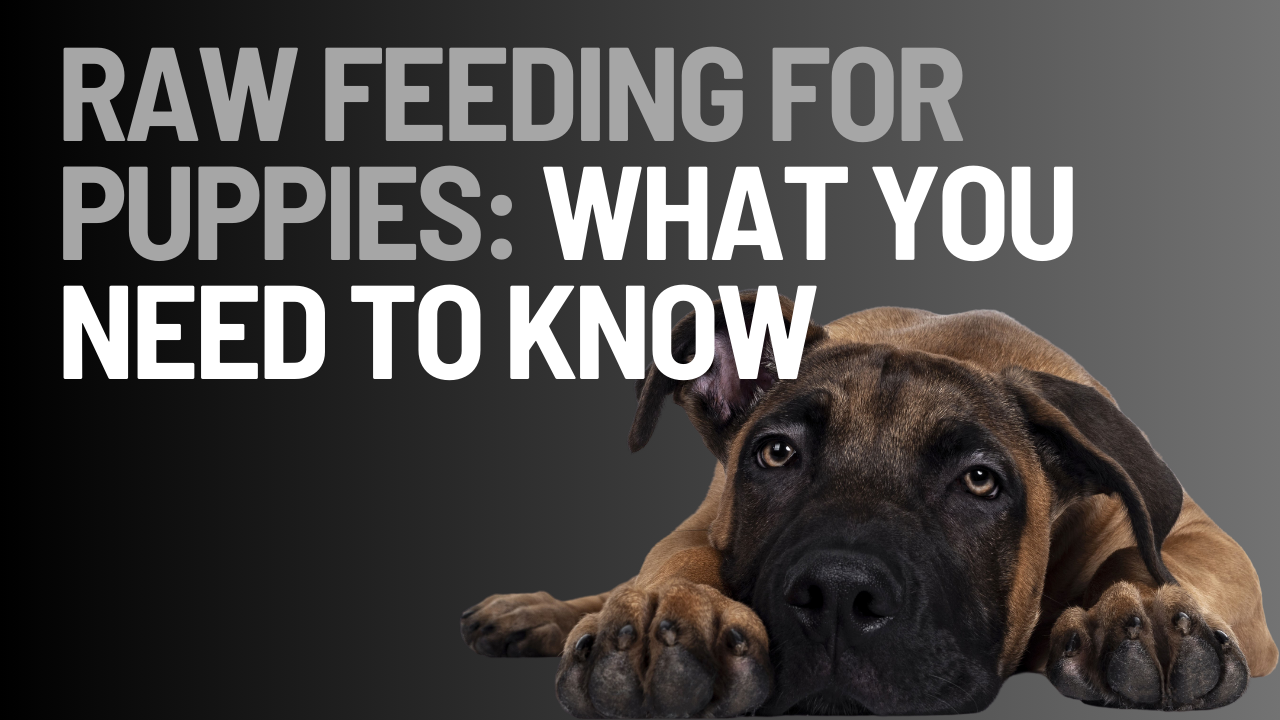Raw feeding for puppies, often referred to as the BARF (Biologically Appropriate Raw Food) diet, has been gaining popularity among dog owners who want to provide a more natural diet for their furry friends. Advocates of raw feeding (like me) believe that it can lead to healthier, happier dogs with shinier coats, cleaner teeth, and better overall health. However, transitioning a puppy to a raw diet requires careful planning and consideration. Here’s what you need to know about raw feeding for puppies.
Understanding the Basics of Raw Feeding
Raw feeding involves providing your puppy with a diet that includes raw meat, bones, fruits, and vegetables, mimicking what their ancestors might have eaten in the wild. The main components of a raw diet typically include:
- Raw Meat: Chicken, beef, lamb, turkey, and other meats.
- Bones: Raw, meaty bones that are safe for puppies to chew and eat.
- Organs: Liver, kidney, and other organs, which are nutrient-dense.
- Fruits and Vegetables: Carrots, apples, blueberries, and leafy greens.
- Supplements: Essential oils, probiotics, and other supplements to ensure a balanced diet.
Benefits of Raw Feeding
Proponents of raw feeding often cite several benefits:
- Improved Digestion: Many dogs on raw diets experience better digestion, leading to smaller, firmer stools.
- Healthier Coat: A diet rich in natural oils and proteins can result in a shinier, healthier coat.
- Better Dental Health: Chewing raw bones can help keep teeth clean and reduce the risk of dental diseases.
- Increased Energy Levels: Puppies may show improved energy and vitality on a raw diet.
- Allergy Relief: Some owners find that raw feeding helps reduce food allergies and sensitivities.
Potential Risks and Considerations
While raw feeding can offer numerous benefits, it’s important to be aware of potential risks and challenges:
- Nutritional Balance: Ensuring that your puppy receives all the necessary nutrients in the correct proportions can be challenging. Consulting with a veterinarian or a canine nutritionist is essential.
- Bacterial Contamination: Raw meat can carry bacteria like Salmonella and E. coli, which can pose health risks to both your puppy and your family. Proper handling and hygiene practices are crucial.
- Bone Safety: Not all bones are safe for puppies. Cooked bones should be avoided as they can splinter and cause internal injuries. Always supervise your puppy when they are chewing on bones.
- Cost and Preparation Time: Raw feeding can be more expensive and time-consuming than feeding commercial (low-quality) kibble. It requires careful meal planning and preparation.
How to Transition to a Raw Diet
Transitioning your puppy to a raw diet should be done gradually to avoid digestive upset. Here’s a step-by-step guide:
- Consult Your Veterinarian: Before making any dietary changes, discuss your plans with your vet to ensure that raw feeding is suitable for your puppy.
- Start Slow: Begin by introducing small amounts of raw food while gradually reducing their regular kibble. This process can take a few weeks.
- Monitor Health: Watch for any signs of digestive upset, allergies, or other health issues during the transition period.
- Balance the Diet: Ensure that the diet is balanced and complete by including a variety of meats, bones, organs, and plant-based foods. Consider using a pre-formulated raw diet or working with a canine nutritionist.
- Maintain Hygiene: Practice good hygiene when handling raw meat. Clean all surfaces and utensils thoroughly and wash your hands regularly.
Sample Raw Feeding Plan for Puppies
Here’s a basic example of what a day of raw feeding might look like for a puppy:
- Breakfast: Raw chicken wings or necks, a small portion of liver or other organ meat, a raw egg with shell, and a few pieces of carrot or apple.
- Lunch: Ground beef mixed with chopped leafy greens and a teaspoon of fish oil.
- Dinner: Raw meaty bones (e.g., lamb ribs), a small portion of kidney, and a handful of blueberries.
Conclusion
Raw feeding for puppies can offer numerous health benefits, but it requires careful planning and a commitment to maintaining a balanced diet and proper hygiene. Always consult with your veterinarian before making significant changes to your puppy’s diet. With the right approach, raw feeding can be a healthy and rewarding choice for your growing puppy. By providing them with a diet that closely resembles their natural nutrition, you can help ensure they grow up to be healthy, happy, and vibrant dogs.

